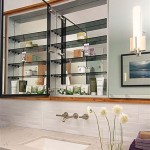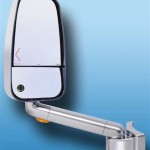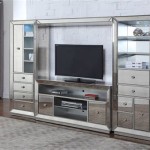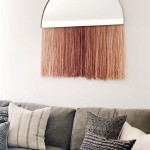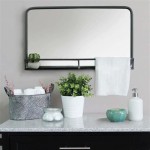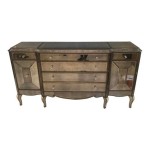How To Frame A Mirror For Bathroom
Framing a bathroom mirror elevates the room's aesthetics and provides a polished, finished look. This project can be accomplished with basic DIY skills and readily available tools. Choosing the right frame and employing proper techniques ensures a successful and long-lasting upgrade.
Choosing the Right Frame
Selecting an appropriate frame involves considering both aesthetics and practicality. The frame's style should complement the bathroom's overall design. Moisture resistance is crucial in a bathroom environment. The frame's dimensions must accurately fit the mirror's size.
* Consider the bathroom's existing décor. * Choose moisture-resistant materials like treated wood, plastic, or metal. * Measure the mirror precisely to ensure a proper fit. * Explore various frame styles: simple, ornate, modern, or rustic. * Consider the frame's color and finish. * Evaluate the frame's weight and ensure the wall can support it. * Pre-finish or seal wooden frames for added protection against humidity.Gathering Necessary Tools and Materials
Having the correct tools and materials on hand streamlines the framing process and avoids interruptions.
* Measuring tape * Pencil * Safety glasses * Miter saw or hand saw with miter box (for angled cuts) * Wood glue (if using a wooden frame) * Finishing nails * Hammer * Wood filler (if necessary) * Caulk (for sealing gaps) * Mirror adhesive * Shims (optional, for leveling)Preparing the Mirror and Frame
Careful preparation is essential for achieving a professional-looking result. This includes ensuring the mirror's surface is clean and the frame is correctly sized.
* Clean the mirror thoroughly with glass cleaner. * Dry the mirror completely. * Lay the frame pieces face down on a protected surface. * Arrange them to form the frame's perimeter. * Double-check the measurements to ensure a snug fit around the mirror.Assembling the Frame
Accurate assembly is crucial for creating a strong and visually appealing frame. Precise cuts and secure fastening methods ensure the frame's structural integrity.
* For wooden frames, apply wood glue to the mitered edges. * Join the frame pieces, forming a rectangle or square. * Secure the corners with finishing nails. * Countersink the nails slightly. * Fill nail holes with wood filler, if desired. * Allow the glue and filler to dry completely. * Sand any rough edges or excess filler. * Apply a sealant or finish to wooden frames for added protection.Attaching the Frame to the Mirror
Applying mirror adhesive correctly ensures a secure bond between the frame and the mirror, preventing shifting and potential damage.
* Apply mirror adhesive to the back of the frame, following the manufacturer's instructions. * Carefully position the frame onto the mirror surface. * Press firmly and evenly to distribute the adhesive. * Use shims, if necessary, to level the frame. * Allow the adhesive to cure completely according to the manufacturer's recommendations.Sealing and Finishing
Sealing the edges provides additional protection against moisture and enhances the frame's longevity. This final step completes the project, providing a polished and professional appearance.
* Apply a thin bead of caulk along the inside edge of the frame, where it meets the mirror. * Smooth the caulk with a wet finger or caulk tool. * Wipe away any excess caulk. * Allow the caulk to dry completely. * Touch up any imperfections in the frame's finish.Mounting the Framed Mirror
Securely mounting the framed mirror is the final step in the process. Appropriate mounting hardware and techniques ensure the mirror's stability and prevent damage to the wall.
* Determine the appropriate mounting method based on the frame's weight and the wall's construction. * Use D-rings, wire, or specialized mirror clips for hanging. * Mark the desired location on the wall. * Use a level to ensure the mirror hangs straight. * Install the appropriate wall anchors. * Hang the framed mirror securely.Maintaining the Framed Mirror
Proper maintenance preserves the framed mirror's appearance and extends its lifespan. Regular cleaning and inspection help prevent damage from moisture and other environmental factors.
* Regularly clean the mirror and frame with a mild glass cleaner and a soft cloth. * Avoid using abrasive cleaners or harsh chemicals. * Inspect the frame and sealant periodically for any signs of damage or deterioration. * Repair any damage promptly to prevent further issues. * Ensure adequate ventilation in the bathroom to minimize moisture buildup.
How To Frame A Mirror

Diy Bathroom Mirror Frame Without Removing Clips Her Happy Home

Diy Stick On Mirror Frame Sawdust Sisters

Mirror Frame Diy How To Update A Basic Bathroom Our Faux Farmhouse

Framing A Bathroom Mirror Tempting Thyme

Diy Bathroom Mirror Frame With Molding The Happier Homemaker

Bathroom Mirror Frames 2 Easy To Install Sources A Diy Tutorial Retro Renovation

Matte Black Mirror Frames Bathroom Trim Mirrormate

How To Frame Out That Builder Basic Bathroom Mirror For 20 Or Less Design Mirrors Diy

Mirror Frame Diy How To Update A Basic Bathroom Our Faux Farmhouse

